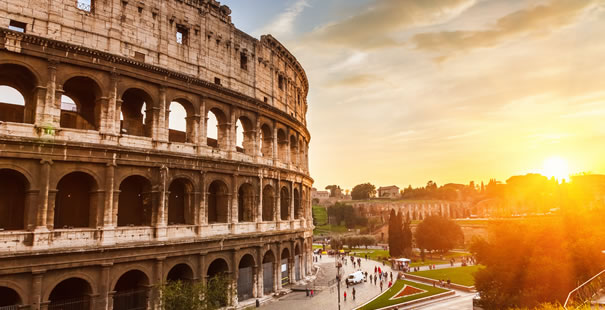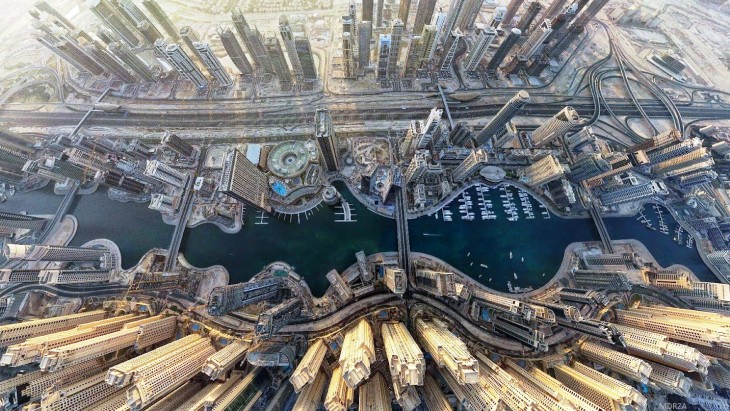Architecture’s role in Architecture and tourism are very closely related activities. It can be said to depend on each other. Their mutual relationship is obvious since ancient times where the architecture, as a tourist attraction, had a very important role. Temples have been built in honor of the gods, grand theaters, stadiums, the Colosseum and other monumental public buildings attracted large crowds as characteristics collected certain culture and society in which they arose. Architecture was and is an expression of lifestyle and spirit of the times certain epochs and cultures in which it arises. Many cities throughout Europe (Paris, Rome, Athens, Venice, Amsterdam and many others) are an ideal example of how the spirit of an era, an era still lives through the architecture of buildings built in this period, based its entire tourist offer and its development just on the monuments culture in the field of architecture, but also on the cultural characteristics of the society belonging to an age when architecture was created. It can be said that the architecture in this case is source of information about the history and the element that identifies the city, nation, country.  photo credits:
photo credits:
http://www.logitravel.co.uk/hotels/rome-11613374.html
Lately there has been a major transformation. Until a few decades, historical heritage (monuments) were the basis of cultural and architectural tourism, today excellent Modern architecture has the same power of attraction, what makes cities great increase in the number of tourists and turning cities into a new tourist attraction. The example that best describes this is Dubai, known worldwide as a Middle Eastern capital of extravagance. If we look at photos from 20 years ago, and 10 years in advance can be clearly seen how the city for only 10 years, thanks to oil money, became a popular and the last few years one of the major tourist destinations in the world. However, it is well known that today oil plays a very small role in the overall revenues of the state, while tourism and trade play a most important role. This is an example of modern branding of the city by the imposing architecture. Modern architecture is a commercial, whether it be on the premises or on the context in which it is created. The building itself is an attraction, a great advertising that its form points to the leisure facilities, but when placed in the context of the city, the region and the environment in which it is located (location, climate, relief, cityscape) then becomes a symbol of not only the author’s work but rather the symbol of the city, region, country, society. An ideal example is Sydney Opera House( by architect Jon Utzon) is a true example of the impact that architecture can have, not only the location at which it is generated, but also to the global culture. Location of the property affects the inspiration for the shape of the object, which visually should be a sail on the high seas. The image that was created by unique performance of shell of the object became a global landmark in Sydney, but also symbol across Australia. Surely, such a facility would be a spectacle at any location in the technological sense, but its siting in the coastal city has a specific meaning and thus the dependence of the location comes into play. Such objects of course should contribute to a better positioning of the city in the network / system of European and world cities, which has the effect of economic advancement.  photo credits:
photo credits:
http://www.prideviewproperties.co.uk/listing/dubai-marina/
However, is this modern architecture economicaly and functionally viable? As for the commercial component architecture and tourism, art and expressive architecture is certainly a luxury where economically successful enterprise functionality of the building deemed sufficient. For the purpose of explanation must be noted that in this case we’re talking about architectural design that is reduced to the minimum requirements set by one such a functional building. Tourist property mostly have value if they are profitable, no get no value. Architecture costs and naturally multiplies the investment compared to the facility that is reduced to pure functionality. Already at the stage of business planning topics architecture is the first critical point and requires a professional economical budget and highly professional estimation of the location and design of products. In contrast, good or unusual architecture increases the interest of the market and, depending on the product evaluation, can give a new location, attractive appearance. This again increases demand and real price, which in turn makes for a larger commercial success than it would perhaps be achieved by conventional functional construction. Architecture creates also new functionality, or causes by using this new functionality that all inherited and old different experiences, thus offering the possibility of tourism development of new products. From the perspective of visitors still here must not remain non-mentioned discussion ‘form follows function’ or ‘function follows form’ that just in tourism real estate and products can lead to oscillation in the evaluation of both positive and negative. Tourism and architecture never before were so closely together on the development of products such as is the case today. This again closes the circle of mutual success. Therefore, unsuccessful projects are “monsters”, built as a demonstration of a specific conceptual directions in architecture, which are successful in their intent to share certain thoughts and way of looking at architecture and urban space and there are only a sculptural, while their function transforms. There we come to the point of sustainability, which is not just a technical problem. In order to achive success, a sustainable project must be socially sustainable as well as economically. Such a project should comunicate with its society, should attract and be inspiring, and over all mast make economic sense. Architecture in terms of tourism is now an integral element of the planning of the city, whether it is of cultural heritage or contemporary architecture. When it comes to heritage, it is the architecture resulting in a particular context that is completely defined and therefore it is a testimony about history. In this sense, the architecture can become a brand that describes the identity of certain social or cultural groups, and linked to the cultural and educational tourism. Although today in most cases this architecture is unfunctional and hard switching to modern forms of construction works and the city life, it must be preserved and used in the planning of sustainable development of the city just as part of the tourism industry. Modern architecture, unlike the architecture of cultural heritage, is viewed from the aspect of entertainment and spectacle, even if we talk about function of the structure, location or shape. Unusual and controversial form that uses all the benefits of modern technology certainly attracts the attention of visitors, but this is not always enough. Location which provides the context and function that brings the economic viability and the possibility of continued use of space is also one of the important factors for the transfer of a work of architecture in the branded product. Modern cities nowadays pay a great attention to precisely such projects, as drivers of further development and city expansion, as well as the region, in some cases and countries. Great architecture, not only that it promotes economic and social development, but it becomes a product that markets itself as a symbol that exceeds target group and everyone’s must-see tourist destination.